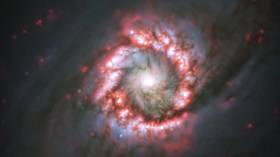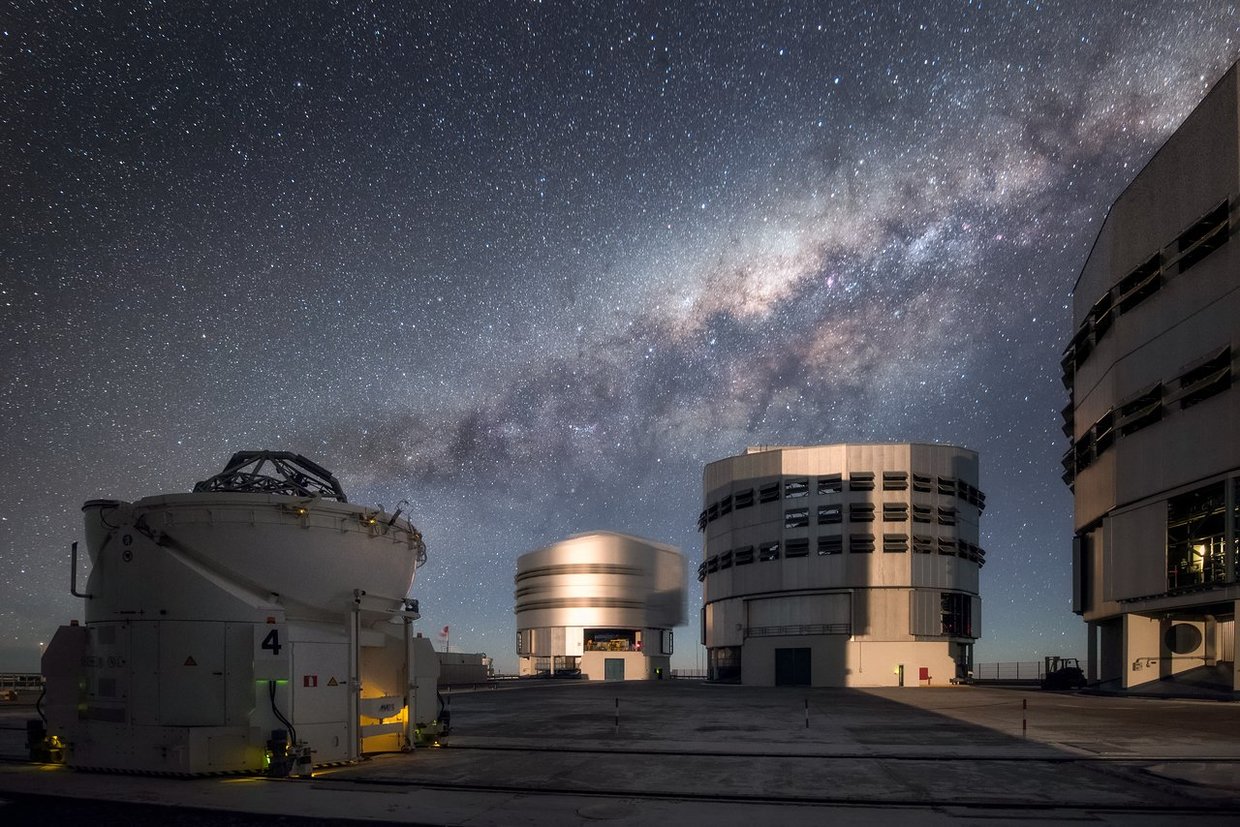Spectacular ‘rose’ of star-forming regions snapped encircling distant supermassive black hole

In a galaxy far, far away, astronomers have discovered an incredibly beautiful phenomenon which sees a star-bursting ring surrounding a supermassive black hole, like the petals of a rose.
The European Southern Observatory captured the stunning stellar light show thanks to the MUSE instrument on its Very Large Telescope (VLT).
The magnificent image captures the distant spiral galaxy known as NGC 1097, which is located 45 million light-years away from Earth, in the constellation of Fornax.
A supermassive black hole lies at the center of the fascinating galaxy and the extraordinary ring of star-forming regions entirely encircles it.

Research indicates that the glowing ring of star-forming regions have a network of gas and dust that spirals to the black hole. The ESO said the image shows a “textbook example” of a star-bursting nuclear ring.
The ring births new stars thanks to an inflow of material towards the center of the galaxy. It stretches approximately 5,000 light-years in diameter, meaning it is dwarfed by the full size of the galaxy which extends tens of thousands of light-years beyond it.
The darker lanes captured in the MUSE image show dust, gas and debris being funneled into the supermassive black hole.
“This process heats up the surrounding matter forming an accretion disc around the black hole and launching huge amounts of energy into the surrounding area,” the ESO explained.
Also on rt.com Mysterious, unexplained GHOST CIRCLES hovering in space leave astronomers baffled“Nearby dust is heated up and star formation accelerates in the area around the supermassive black hole, forming the star-bursting nuclear ring shown in pink and purple tones in the image,” it added.
MUSE, which stands for Multi-Unit Spectroscopic Explorer, is attached to one of the four, 8.2-meter telescopes that make up the Very Large Telescope. Its unique design allows researchers to map complex mechanisms within many galaxies and analyse the formation of stars and star clusters.
The telescope is positioned at the ESO’s Paranal Observatory in the Atacama Desert of northern Chile.
Like this story? Share it with a friend!














